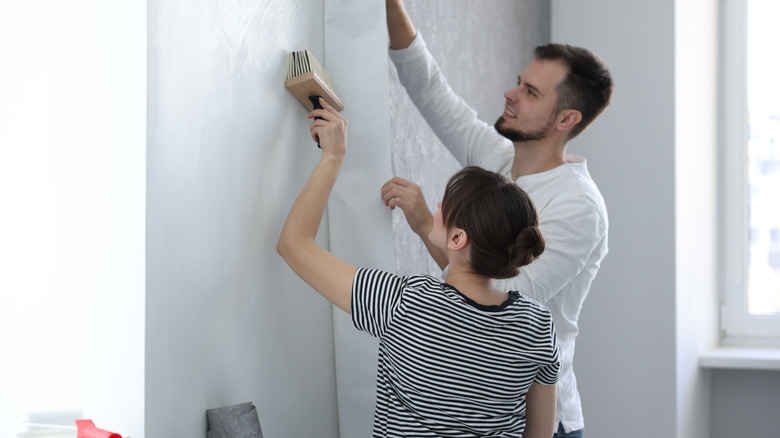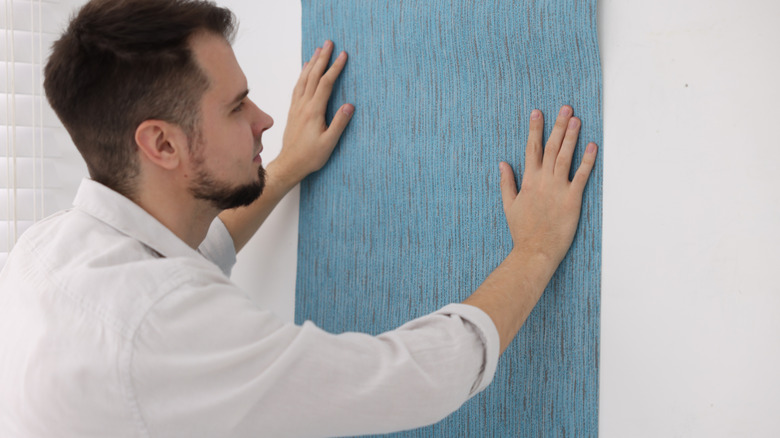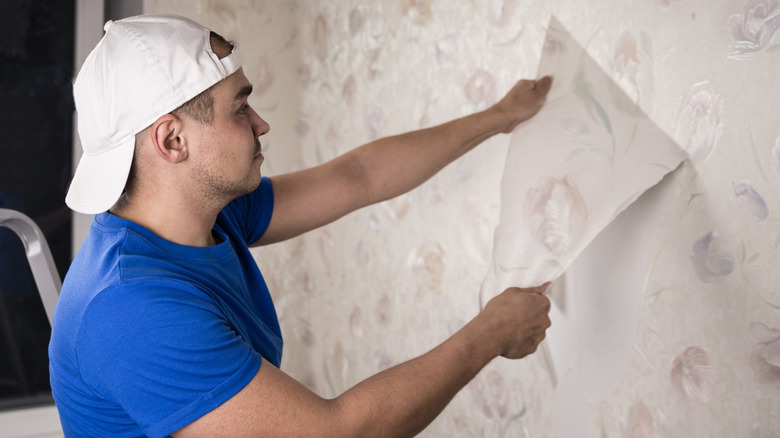Everything You Need To Know Before Putting Up Textured Wallpaper
Choosing the right wallpaper for your space is crucial for creating the right environment for your home. Wallpaper can add style and personality to the room it is in, but it can also give you an easy-to-clean wall, which is especially helpful in busy households. Wallpaper can either be non-textured, which most people think of when they hear wallpaper, or textured, which has a raised surface that creates a visual effect and — well — texture.
If you choose to hang textured wallpaper in your home, there are some things you need to know and consider. In addition to the overall appearance being different from traditional non-textured wallpaper, installation can be more complex, and the cost of purchasing it is generally higher. However, many homeowners find the drawbacks to be worth it, as textured wallpaper adds a dimension of visual interest to the room and can hide imperfections like cracks or uneven wall surfaces. Keep reading to learn everything you need to know before hanging this type of wallpaper.
Textured wallpaper pros
Textured wallpaper can add visual interest and bold color to your home when you're not 100% sure, as it's a less permanent upgrade than swapping your countertops or installing new flooring. But deciding on textured wallpaper over non-textured comes with other benefits as well. First, because textured wallpaper can mimic other materials like woven fabric, cork, and even fur, it creates a visual masterpiece in the room it's in and can act as a dramatic focal point and conversation starter. If you're planning on wallpapering a room where you frequently host guests, like the dining room or living room, choosing textured wallpaper adds a unique touch to the space.
Homeowners know that things like dings, dents, and cracks happen to walls, especially in families with pets or young children. Luckily, textured wallpaper helps hide these imperfections more than traditional wallpaper can. This is because non-textured wallpaper is thin and sits completely flush to the wall, whereas textured wallpaper is typically thicker and has raised patterns that help to camouflage imperfections.
Since textured wallpaper is made from thick, durable material, it's also more resistant to tears and scuffs than flat wallpaper. This means that you can hang it and feel confident that you won't need to replace it anytime soon, a serious benefit if you're looking to upgrade a high-traffic space.
Textured wallpaper cons
While there are many positive aspects to choosing textured wallpaper, there are also a few drawbacks. First, and perhaps not surprisingly, it's often considerably more expensive than flat wallpaper due to how the texture is added in the manufacturing process. If you're picking the perfect wallpaper for your kitchen, for example, a space that could require a lot of material, choosing textured wallpaper might not be the best option.
Another potential drawback of textured wallpaper is the complexity of installation. Since it has a raised surface and sometimes intricate designs, this DIY project can be more challenging than traditional peel-and-stick wallpaper. The raised patterns can provide spaces for dust to accumulate, so keeping your walls looking clean could also require more frequent maintenance and attention to detail.
Depending on the intricacy of the design and material, if your textured wallpaper has a rip or damage, you will have limited repair options and might have to replace a significant portion to make it fully match. If you are wallpapering a small space with a simple textured pattern, this might not be a problem, but repairs could get expensive if you need to completely replace a large wall to ensure everything matches up.


